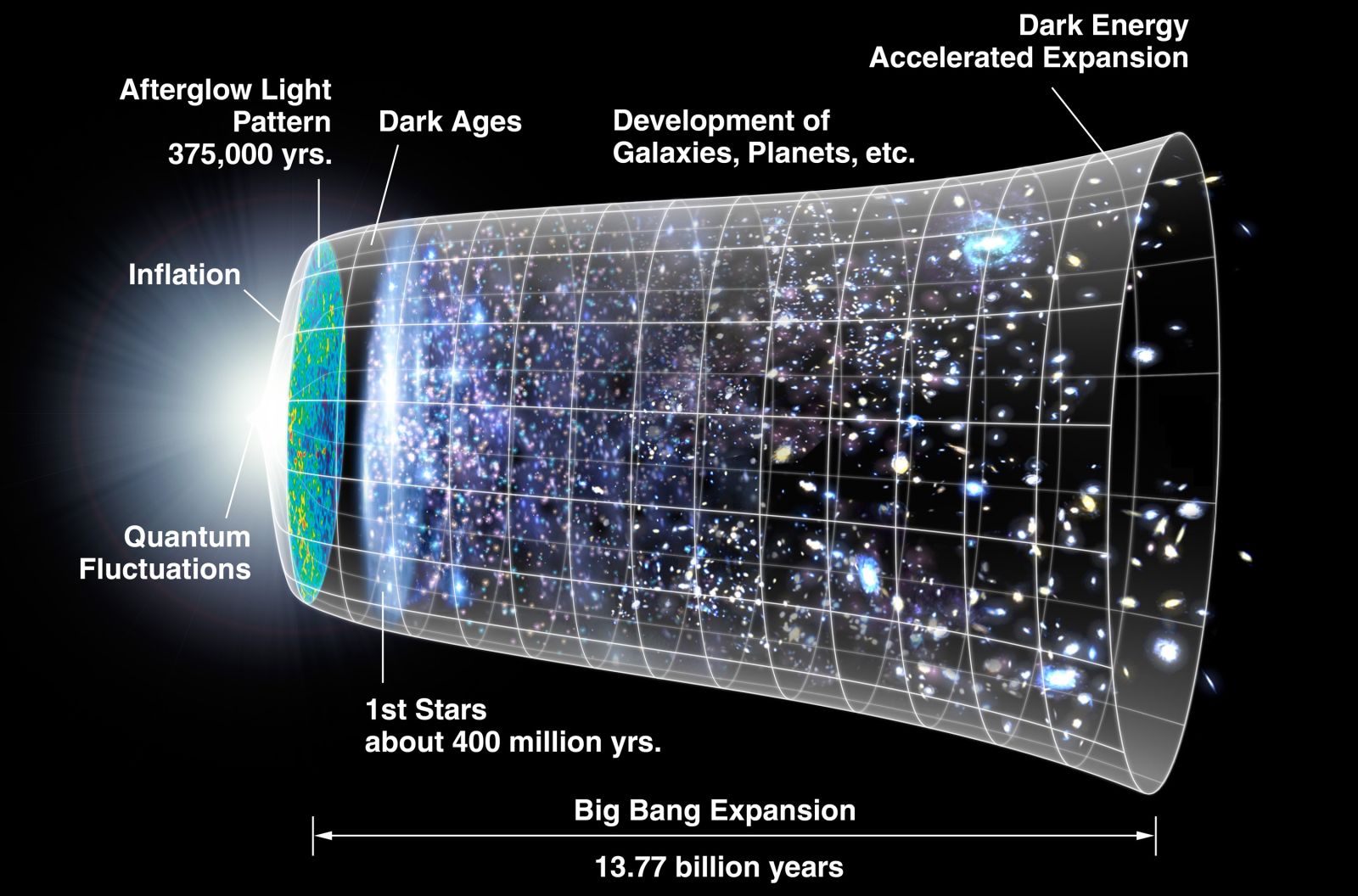This new model links dark matter and cosmic inflation 🌀
Follow us on Google News (click on ☆)
According to a study published in *Physical Review Letters*, Texan researchers have proposed a new model called WIFI (Warm Inflation via ultraviolet Freeze-In). This model explores a mechanism through which dark matter would be produced during inflation, before the "reheating" phase when elementary particles appeared.

The "timeline" of the Universe - Image Wikimedia
The WIFI model is based on the idea that dark matter could emerge from subtle and rare interactions between the inflaton field and particles in an intense energy environment. Unlike classical "freeze-out" or "freeze-in" scenarios, here this matter would be produced during the phase of cosmic inflation.
Inflation, theorized about 45 years ago, explains why the visible Universe appears homogeneous and isotropic while being in expansion. During this period, the Universe grew by an unimaginable factor of 1026, in just 10-36 seconds.
However, producing matter during this phase presents a challenge: the expansion itself dilutes almost everything. Nevertheless, the WIFI model postulates that radiation, generated by the inflaton field, could have produced dark matter particles via an ultraviolet freeze-in mechanism.
This model is all the more intriguing because it could be testable. Experiments planned in the next decade on the cosmic microwave background could detect signatures of so-called "warm" inflation, a key pillar of the WIFI model. If confirmed, this would pave the way for new theories on the origin of dark matter.
Broadening their perspective, the authors suggest that this mechanism could also explain the emergence of particles playing a key role in the evolution of the early Universe. This shows that the WIFI model goes far beyond just dark matter.
If dark matter was produced during inflation, then its origin would precede the moment when the first particles of the Standard Model were formed. A perspective that shakes up our understanding of the cosmos.